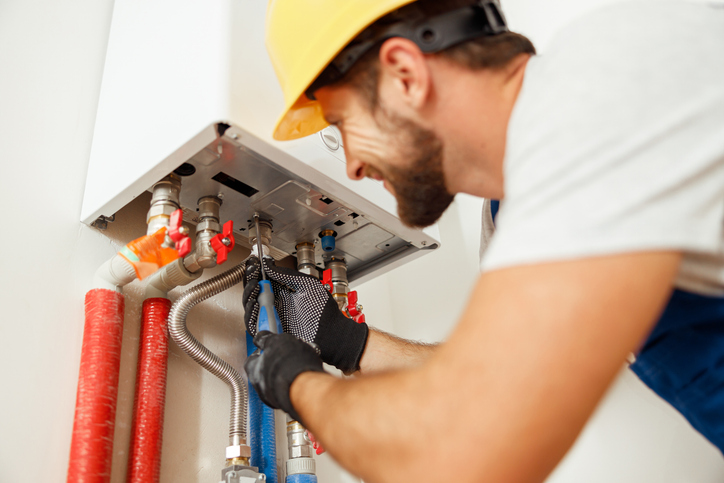As the world moves towards smarter living, the integration of the Internet of Things (IoT) into heating system installations marks a significant advancement in home and building management. IoT technology allows for the remote monitoring and control of heating systems, enhancing energy efficiency, comfort, and convenience. In this article, we will explore the multifaceted role of IoT in modern heating installation, from smart thermostats to energy management systems, and how these innovations contribute to sustainable living.
1. Understanding IoT in Heating Systems
The Internet of Things refers to a network of interconnected devices that communicate with each other to collect and share data. IoT enables various components—such as boilers, radiators, and thermostats—to work together seamlessly. This interconnectedness allows for real-time monitoring and control, making heating systems smarter and more efficient.
2. Enhanced Energy Efficiency
One of the most significant benefits of IoT in the installation process is the enhanced energy efficiency it offers. Smart heating systems can analyze usage patterns and adjust settings accordingly. For instance, if a home is unoccupied during the day, the system can lower the temperature to conserve energy and then resume heating just before residents return. This not only reduces energy bills but also lessens the environmental impact.
3. Remote Monitoring and Control
IoT technology enables homeowners to monitor and control their heating systems remotely through smartphone apps. This convenience allows users to adjust temperatures, receive alerts about system performance, and even schedule heating cycles while away from home. The ability to control heating remotely ensures optimal comfort and efficiency, making it easier to manage energy usage.
4. Smart Thermostats
Smart thermostats are at the forefront of IoT-enabled installations. These devices learn user preferences over time and adjust heating schedules automatically. Some models even incorporate weather data, making real-time adjustments based on outdoor conditions. This level of automation leads to significant energy savings and increased comfort, as users no longer need to set their thermostats manually.
5. Predictive Maintenance
IoT sensors can monitor heating systems’ performance, identifying potential issues before they escalate into major problems. By analyzing data from various components, the system can alert homeowners and service providers to perform maintenance when necessary. This predictive maintenance approach reduces downtime, extends the lifespan of heating equipment, and enhances overall efficiency.
6. Integration with Other Smart Home Devices
IoT heating systems can easily integrate with other smart home devices, such as smart lighting and security systems. For instance, if a security system detects that no one is home, it can signal the heating system to lower the temperature, further conserving energy. This interconnected approach creates a cohesive smart home ecosystem that enhances comfort and convenience while maximizing energy savings.
7. User-Friendly Interfaces and Data Insights
IoT technology often comes with user-friendly interfaces that provide insights into energy usage and system performance. Homeowners can access data on their heating systems’ efficiency, track energy consumption trends, and receive recommendations for improving efficiency. This transparency empowers users to make informed decisions about their heating systems and encourages sustainable practices.
8. Environmental Benefits
The adoption of IoT in these installations has significant environmental benefits. By optimizing energy use and reducing waste, IoT systems contribute to lower greenhouse gas emissions. Furthermore, many smart heating solutions are compatible with renewable energy sources, such as solar panels, allowing homeowners to harness clean energy for their heating needs.
9. Cost Savings and Return on Investment
While the initial investment in IoT-enabled heating systems may be higher than conventional systems, the cost savings are substantial in the long run. Reduced energy consumption results in reduced utility bills, and the enhanced lifespan of equipment through predictive maintenance can prevent costly repairs or replacements. Additionally, many energy companies offer incentives for upgrading to smart heating systems, further enhancing the return on investment.
10. Future Trends in IoT Heating Technology
As IoT technology continues to evolve, we can expect even greater advancements. Emerging trends include the use of artificial intelligence for more sophisticated data analysis and automation, improved energy management systems that integrate multiple energy sources, and enhanced user interfaces for seamless interaction. These innovations will further transform how we approach heating in residential and commercial spaces.
The integration of IoT represents a significant shift toward smarter, more efficient energy use. By leveraging connected technology, homeowners can enjoy enhanced comfort, reduced energy costs, and a lower environmental impact. As IoT technology continues to advance, the future of heating system installations looks promising, paving the way for sustainable living.
Are you ready to upgrade your heating system with IoT technology? Contact us at Five Star Air at 623-244-0414 to learn more about our smart heating installation options and start enjoying the benefits of a more efficient and convenient heating solution.





